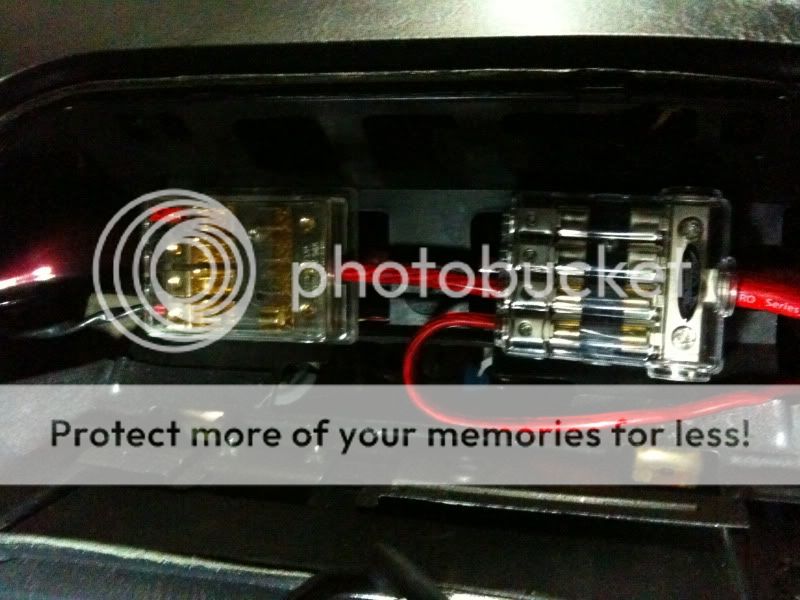The idea of re-wiring the fuel pump circuit on a DSM is nothing new, but I thought some would be interested in the real benefit of doing so.
The idea is to supply the fuel pump with the highest possible voltage you can get to it. More voltage available at the pump means more potential fuel volume from the pump, all other factors remaining constant.
I was always led to believe that a stock 1G fuel pump circuit was a real bottleneck, with a lot of voltage drop across the circuit between B+ and the pump. With that in mind, I decided to check it myself...
![Image]()
This is my battery voltage as measured directly at the battery with the engine idling, which is a normal voltage with a good working charging system.
![Image]()
This is the voltage my pump was seeing at the same time; well over a volt of drop between the battery and the pump. While that may not seem like much, it makes a huge difference when it comes to the pump supplying the fuel. This drop would likely worsten as load on the pump increases, since current demand (amperage) would go up accordingly.
Using some older test info listed on RRE's site, you can expect an increase of flow up to 40%, just going from 12V to 14V. Pretty significant.
I deciced to re-wire my circuit using not overly huge 12 AWG wire, fused at the battery terminal, running un-interrupted to the fuel pump connector. I installed a basic relay in back to allow the factory fuel pump circuit to trigger the control side of the relay, and complete the circuit from my new wire to the pump.
Although I dont have a pic, my voltage went from the 12.6 you see above to about 13.8. Do the math, and you can see what a difference $10 worth of materials and a few hours can make.
I realize I'm not breaking new ground with this, but I thought some newer members might find it interesting. Mods feel free to move this if you see fit.
The idea is to supply the fuel pump with the highest possible voltage you can get to it. More voltage available at the pump means more potential fuel volume from the pump, all other factors remaining constant.
I was always led to believe that a stock 1G fuel pump circuit was a real bottleneck, with a lot of voltage drop across the circuit between B+ and the pump. With that in mind, I decided to check it myself...

This is my battery voltage as measured directly at the battery with the engine idling, which is a normal voltage with a good working charging system.

This is the voltage my pump was seeing at the same time; well over a volt of drop between the battery and the pump. While that may not seem like much, it makes a huge difference when it comes to the pump supplying the fuel. This drop would likely worsten as load on the pump increases, since current demand (amperage) would go up accordingly.
Using some older test info listed on RRE's site, you can expect an increase of flow up to 40%, just going from 12V to 14V. Pretty significant.
I deciced to re-wire my circuit using not overly huge 12 AWG wire, fused at the battery terminal, running un-interrupted to the fuel pump connector. I installed a basic relay in back to allow the factory fuel pump circuit to trigger the control side of the relay, and complete the circuit from my new wire to the pump.
Although I dont have a pic, my voltage went from the 12.6 you see above to about 13.8. Do the math, and you can see what a difference $10 worth of materials and a few hours can make.
I realize I'm not breaking new ground with this, but I thought some newer members might find it interesting. Mods feel free to move this if you see fit.





